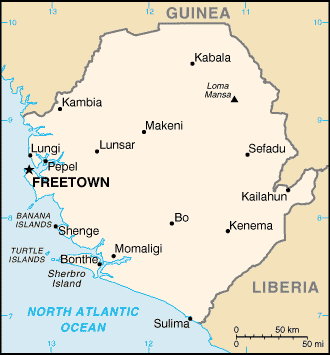NewsDesk @bactiman63
In a follow-up on the anthrax outbreak in Sierra Leone, as of 17 June 2022, a total of six anthrax cases were reported including five confirmed cases and one probable case. Majority of them are among the age group of 15 years and above (43%) followed by 12-59 months ( 29%), 0-11 months (14%) and 5-15 years ( 14%).

The Ministry of Health and Sanitation in Sierra Leone has declared an outbreak of human anthrax in the country after identifying three lab confirmed cutaneous anthrax cases in Karene district. An investigation was conducted as follow up to reports of sickness and death of animals in the adjacent Port Loko district between March and April, with reported consumption of meat in surrounding communities.
Anthrax is a serious infectious disease caused by gram-positive, rod-shaped bacteria known as Bacillus anthracis. Anthrax can be found naturally in soil and commonly affects domestic and wild animals around the world. Although it is rare, people can get sick with anthrax if they come in contact with infected animals or contaminated animal products
Cutaneous anthrax occurs when the spore (or possibly the bacterium) enters a cut or abrasion on the skin. It starts out as a raised bump that looks like an insect bite. It then develops into a blackened lesion called an eschar that may form a scab. Lymph glands in the area may swell plus edema may be present. This form of anthrax responds well to antibiotics. If untreated, deaths can occur if the infection goes systemic. 95% of cases of anthrax are cutaneous.
- Monkeypox situation update in Spain
- Ukraine: Chickenpox outbreak reported in Chernivtsi crisis center
- Vibrio vulnificus: Florida reports additional death in Citrus County
- Florida addresses fentanyl overdoses in Public Health and Safety Alert
- Pakistan polio vaccination campaign: More than 12.3 million children received polio vaccines in 68 districts
- Missouri reports first Naegleria fowleri case since 1987, Iowa lake closed, considered a potential exposure
- Africa: Suspected cases of Marburg virus disease reported in Ghana
- Cholera outbreak in Iraq affects scores
- Brazil: Human rabies case reported in Federal District

